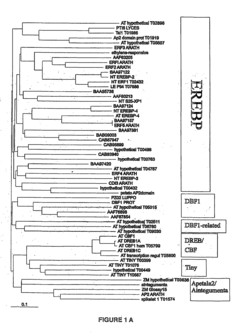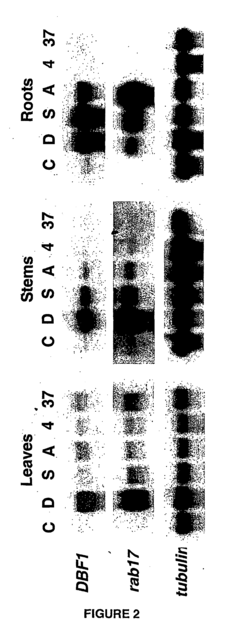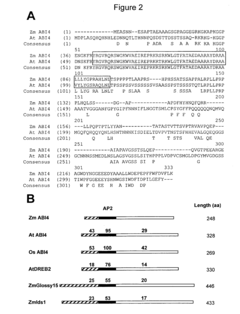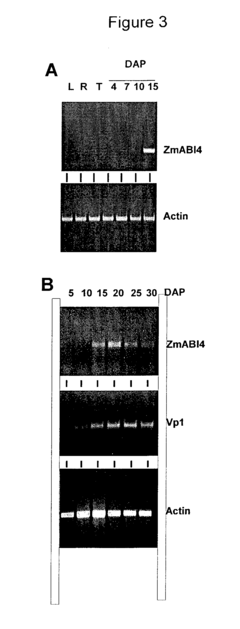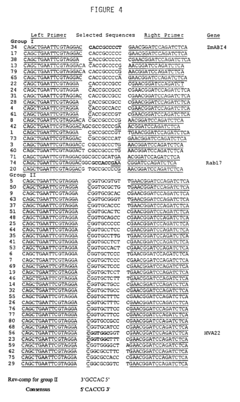Abscisic Acid Contributions to Plant Homeostasis Under Extreme Conditions
JUL 14, 20259 MIN READ
Generate Your Research Report Instantly with AI Agent
Patsnap Eureka helps you evaluate technical feasibility & market potential.
ABA Background and Objectives
Abscisic acid (ABA) is a crucial plant hormone that plays a pivotal role in regulating plant growth, development, and stress responses. Discovered in the 1960s, ABA has been the subject of extensive research due to its significant contributions to plant homeostasis, particularly under extreme environmental conditions. The primary objective of this technical research report is to comprehensively examine the multifaceted roles of ABA in maintaining plant homeostasis when faced with various abiotic stresses.
ABA's importance in plant physiology has grown exponentially over the past few decades, as climate change continues to pose unprecedented challenges to global agriculture. This phytohormone acts as a central regulator in plant responses to drought, salinity, cold, and heat stress, making it a critical area of study for crop improvement and food security. Understanding the intricate mechanisms by which ABA mediates stress responses can potentially lead to the development of more resilient crop varieties capable of withstanding extreme weather conditions.
The evolution of ABA research has been marked by several key milestones. Initial studies focused on its role in seed dormancy and germination, but subsequent investigations revealed its broader functions in stomatal regulation, root growth, and stress signaling. Recent advancements in molecular biology and genetics have provided deeper insights into ABA biosynthesis, perception, and signaling pathways, unveiling a complex network of interactions that govern plant responses to environmental stimuli.
One of the primary goals of this research is to elucidate the molecular mechanisms underlying ABA-mediated stress responses. This includes exploring the ABA receptors, such as the PYR/PYL/RCAR family, and their interactions with downstream signaling components like protein phosphatases and kinases. Additionally, we aim to investigate the transcriptional regulation of ABA-responsive genes and the crosstalk between ABA and other phytohormones in coordinating stress responses.
Another crucial objective is to assess the potential applications of ABA-related knowledge in agriculture and biotechnology. This encompasses exploring strategies for enhancing crop tolerance to abiotic stresses through genetic engineering or chemical interventions targeting ABA pathways. Furthermore, we seek to identify novel ABA-responsive genes and regulatory elements that could serve as valuable tools for crop improvement programs.
By comprehensively analyzing the current state of ABA research and its implications for plant homeostasis under extreme conditions, this report aims to provide a solid foundation for future investigations and practical applications in agriculture. The findings presented here will contribute to our understanding of plant stress biology and potentially pave the way for innovative solutions to address the challenges posed by climate change to global food production.
ABA's importance in plant physiology has grown exponentially over the past few decades, as climate change continues to pose unprecedented challenges to global agriculture. This phytohormone acts as a central regulator in plant responses to drought, salinity, cold, and heat stress, making it a critical area of study for crop improvement and food security. Understanding the intricate mechanisms by which ABA mediates stress responses can potentially lead to the development of more resilient crop varieties capable of withstanding extreme weather conditions.
The evolution of ABA research has been marked by several key milestones. Initial studies focused on its role in seed dormancy and germination, but subsequent investigations revealed its broader functions in stomatal regulation, root growth, and stress signaling. Recent advancements in molecular biology and genetics have provided deeper insights into ABA biosynthesis, perception, and signaling pathways, unveiling a complex network of interactions that govern plant responses to environmental stimuli.
One of the primary goals of this research is to elucidate the molecular mechanisms underlying ABA-mediated stress responses. This includes exploring the ABA receptors, such as the PYR/PYL/RCAR family, and their interactions with downstream signaling components like protein phosphatases and kinases. Additionally, we aim to investigate the transcriptional regulation of ABA-responsive genes and the crosstalk between ABA and other phytohormones in coordinating stress responses.
Another crucial objective is to assess the potential applications of ABA-related knowledge in agriculture and biotechnology. This encompasses exploring strategies for enhancing crop tolerance to abiotic stresses through genetic engineering or chemical interventions targeting ABA pathways. Furthermore, we seek to identify novel ABA-responsive genes and regulatory elements that could serve as valuable tools for crop improvement programs.
By comprehensively analyzing the current state of ABA research and its implications for plant homeostasis under extreme conditions, this report aims to provide a solid foundation for future investigations and practical applications in agriculture. The findings presented here will contribute to our understanding of plant stress biology and potentially pave the way for innovative solutions to address the challenges posed by climate change to global food production.
Market Analysis for ABA-based Products
The market for ABA-based products is experiencing significant growth, driven by increasing environmental challenges and the need for sustainable agricultural solutions. As climate change continues to impact global agriculture, farmers are seeking innovative ways to enhance crop resilience and maintain productivity under extreme conditions. This has created a fertile ground for ABA-based products, which leverage the natural stress-response mechanisms of plants to improve their ability to withstand drought, salinity, and temperature fluctuations.
The global market for plant growth regulators, including ABA-based products, is projected to expand at a compound annual growth rate (CAGR) of over 6% in the coming years. This growth is particularly pronounced in regions facing water scarcity and unpredictable weather patterns, such as parts of North America, Europe, and Asia-Pacific. The agricultural sector remains the primary consumer of ABA-based products, with applications ranging from field crops to high-value horticultural produce.
Within the agricultural market, there is a growing demand for ABA-based products in drought-prone areas, where they can significantly improve water use efficiency and crop yields. The horticultural segment, including ornamental plants and turf grass management, is also showing increased interest in ABA-based solutions for improving plant quality and stress tolerance during transportation and retail display.
The market is further bolstered by the rising trend of sustainable and organic farming practices. As consumers become more environmentally conscious, there is a growing preference for natural plant growth regulators like ABA over synthetic alternatives. This shift is creating new opportunities for ABA-based products in both conventional and organic farming systems.
Emerging applications in seed treatment and post-harvest management are expanding the market potential for ABA-based products. Seed priming with ABA has shown promise in improving germination rates and early seedling vigor under stress conditions. In post-harvest applications, ABA treatments can extend the shelf life of fruits and vegetables by delaying ripening and senescence.
Despite the positive market outlook, challenges remain. The high cost of ABA production and the complexity of its application timing and dosage can be barriers to widespread adoption. Additionally, regulatory hurdles in some regions may slow market penetration. However, ongoing research and development efforts are focused on addressing these challenges, potentially leading to more cost-effective and user-friendly ABA-based solutions in the near future.
The global market for plant growth regulators, including ABA-based products, is projected to expand at a compound annual growth rate (CAGR) of over 6% in the coming years. This growth is particularly pronounced in regions facing water scarcity and unpredictable weather patterns, such as parts of North America, Europe, and Asia-Pacific. The agricultural sector remains the primary consumer of ABA-based products, with applications ranging from field crops to high-value horticultural produce.
Within the agricultural market, there is a growing demand for ABA-based products in drought-prone areas, where they can significantly improve water use efficiency and crop yields. The horticultural segment, including ornamental plants and turf grass management, is also showing increased interest in ABA-based solutions for improving plant quality and stress tolerance during transportation and retail display.
The market is further bolstered by the rising trend of sustainable and organic farming practices. As consumers become more environmentally conscious, there is a growing preference for natural plant growth regulators like ABA over synthetic alternatives. This shift is creating new opportunities for ABA-based products in both conventional and organic farming systems.
Emerging applications in seed treatment and post-harvest management are expanding the market potential for ABA-based products. Seed priming with ABA has shown promise in improving germination rates and early seedling vigor under stress conditions. In post-harvest applications, ABA treatments can extend the shelf life of fruits and vegetables by delaying ripening and senescence.
Despite the positive market outlook, challenges remain. The high cost of ABA production and the complexity of its application timing and dosage can be barriers to widespread adoption. Additionally, regulatory hurdles in some regions may slow market penetration. However, ongoing research and development efforts are focused on addressing these challenges, potentially leading to more cost-effective and user-friendly ABA-based solutions in the near future.
ABA Research Status and Challenges
Abscisic acid (ABA) research has made significant strides in recent years, yet numerous challenges persist in fully understanding its role in plant homeostasis under extreme conditions. The current status of ABA research reveals a complex network of signaling pathways and regulatory mechanisms that mediate plant responses to various environmental stresses.
One of the primary challenges in ABA research is elucidating the intricate interplay between ABA and other plant hormones in stress responses. While ABA is known to play a central role in drought and salinity tolerance, its interactions with hormones such as ethylene, jasmonic acid, and auxins remain incompletely understood. This complexity hinders the development of comprehensive models for plant stress responses.
Another significant challenge lies in deciphering the tissue-specific and temporal dynamics of ABA signaling. Recent studies have shown that ABA responses can vary dramatically between different cell types and developmental stages, making it difficult to generalize findings across plant species and environmental conditions. Advanced imaging techniques and single-cell analyses are being employed to address this challenge, but interpreting the resulting data remains complex.
The molecular mechanisms of ABA perception and signal transduction present ongoing research challenges. While the core ABA signaling pathway involving PYR/PYL receptors, PP2C phosphatases, and SnRK2 kinases has been established, the full complement of downstream targets and their regulatory networks is still being unraveled. Identifying and characterizing these targets is crucial for understanding how ABA mediates diverse physiological responses.
Genetic redundancy in ABA signaling components poses another significant hurdle. Many key players in the ABA pathway belong to large gene families with overlapping functions, complicating efforts to dissect their individual roles through traditional genetic approaches. CRISPR-Cas9 gene editing and other advanced molecular tools are being increasingly utilized to overcome this challenge.
The translation of ABA research findings from model organisms to crop plants represents a critical challenge in agricultural applications. While extensive research has been conducted in Arabidopsis thaliana, applying this knowledge to improve stress tolerance in economically important crops requires overcoming species-specific differences in ABA metabolism and signaling.
Environmental variability and the complexity of field conditions present additional challenges in ABA research. Laboratory studies often fail to capture the dynamic and unpredictable nature of real-world stress scenarios, necessitating more sophisticated experimental designs and field trials to validate findings and develop practical applications.
One of the primary challenges in ABA research is elucidating the intricate interplay between ABA and other plant hormones in stress responses. While ABA is known to play a central role in drought and salinity tolerance, its interactions with hormones such as ethylene, jasmonic acid, and auxins remain incompletely understood. This complexity hinders the development of comprehensive models for plant stress responses.
Another significant challenge lies in deciphering the tissue-specific and temporal dynamics of ABA signaling. Recent studies have shown that ABA responses can vary dramatically between different cell types and developmental stages, making it difficult to generalize findings across plant species and environmental conditions. Advanced imaging techniques and single-cell analyses are being employed to address this challenge, but interpreting the resulting data remains complex.
The molecular mechanisms of ABA perception and signal transduction present ongoing research challenges. While the core ABA signaling pathway involving PYR/PYL receptors, PP2C phosphatases, and SnRK2 kinases has been established, the full complement of downstream targets and their regulatory networks is still being unraveled. Identifying and characterizing these targets is crucial for understanding how ABA mediates diverse physiological responses.
Genetic redundancy in ABA signaling components poses another significant hurdle. Many key players in the ABA pathway belong to large gene families with overlapping functions, complicating efforts to dissect their individual roles through traditional genetic approaches. CRISPR-Cas9 gene editing and other advanced molecular tools are being increasingly utilized to overcome this challenge.
The translation of ABA research findings from model organisms to crop plants represents a critical challenge in agricultural applications. While extensive research has been conducted in Arabidopsis thaliana, applying this knowledge to improve stress tolerance in economically important crops requires overcoming species-specific differences in ABA metabolism and signaling.
Environmental variability and the complexity of field conditions present additional challenges in ABA research. Laboratory studies often fail to capture the dynamic and unpredictable nature of real-world stress scenarios, necessitating more sophisticated experimental designs and field trials to validate findings and develop practical applications.
Current ABA Application Strategies
01 Regulation of plant stress responses
Abscisic acid (ABA) plays a crucial role in regulating plant responses to various environmental stresses, such as drought, salinity, and temperature fluctuations. It helps maintain plant homeostasis by modulating gene expression, stomatal closure, and other physiological processes to enhance stress tolerance and survival.- Regulation of plant stress responses: Abscisic acid (ABA) plays a crucial role in regulating plant responses to various environmental stresses, such as drought, salinity, and temperature fluctuations. It helps maintain plant homeostasis by modulating gene expression, stomatal closure, and other physiological processes to enhance stress tolerance and survival.
- ABA biosynthesis and signaling pathways: Understanding the biosynthesis and signaling pathways of abscisic acid is essential for manipulating plant homeostasis. Research focuses on identifying key enzymes, receptors, and downstream targets involved in ABA production and perception, which can be used to develop strategies for improving crop resilience and productivity.
- Genetic engineering for ABA-mediated stress tolerance: Genetic modification techniques are employed to enhance plant stress tolerance by altering ABA-related genes. This includes overexpressing genes involved in ABA biosynthesis or signaling, as well as modifying ABA-responsive transcription factors to improve plant homeostasis under adverse conditions.
- ABA's role in seed dormancy and germination: Abscisic acid is a key regulator of seed dormancy and germination, which are critical aspects of plant homeostasis. Research focuses on understanding how ABA levels influence these processes and developing methods to manipulate seed behavior for improved crop establishment and yield.
- Interaction of ABA with other plant hormones: The interplay between abscisic acid and other plant hormones, such as auxins, cytokinins, and ethylene, is crucial for maintaining plant homeostasis. Studies investigate how these hormonal interactions regulate various physiological processes, including growth, development, and stress responses, to develop comprehensive strategies for improving plant performance.
02 ABA biosynthesis and signaling pathways
Research focuses on understanding the biosynthesis of abscisic acid and its signaling pathways in plants. This includes identifying key enzymes, receptors, and downstream components involved in ABA production and perception, which are essential for maintaining plant homeostasis under various environmental conditions.Expand Specific Solutions03 Genetic engineering for improved ABA responses
Genetic modification techniques are employed to enhance plant responses to abscisic acid, aiming to improve crop resilience and productivity. This involves manipulating genes related to ABA biosynthesis, signaling, or downstream effectors to optimize plant homeostasis in challenging environments.Expand Specific Solutions04 ABA-mediated stomatal regulation
Abscisic acid plays a critical role in regulating stomatal opening and closure, which is essential for controlling water loss and maintaining plant water balance. Research focuses on understanding the mechanisms of ABA-induced stomatal movements and their impact on plant homeostasis under various environmental conditions.Expand Specific Solutions05 ABA crosstalk with other plant hormones
Studies investigate the interactions between abscisic acid and other plant hormones, such as auxins, cytokinins, and ethylene, in regulating plant growth, development, and stress responses. Understanding these complex hormone interactions is crucial for maintaining overall plant homeostasis and optimizing crop performance.Expand Specific Solutions
Key Players in ABA Research
The research on Abscisic Acid's role in plant homeostasis under extreme conditions is in a mature stage, with significant market potential due to increasing climate challenges. The technology's maturity is evident from the involvement of major agricultural companies like Syngenta, BASF, and Corteva Agriscience, alongside academic institutions such as China Agricultural University and the University of California. The competitive landscape is diverse, with both established agrochemical firms and emerging biotech companies like Performance Plants Inc. contributing to innovations. This field is likely to see continued growth as the demand for climate-resilient crops increases globally.
Valent BioSciences Corp.
Technical Solution: Valent BioSciences Corp. has developed innovative approaches to harness abscisic acid (ABA) for enhancing plant stress tolerance. Their research focuses on exogenous ABA applications to improve crop resilience under extreme conditions. They have formulated stable ABA solutions that can be applied as foliar sprays or soil drenches. These formulations have shown significant efficacy in mitigating drought stress in various crops, with treated plants exhibiting improved water use efficiency and yield stability under water-limited conditions[1][3]. The company has also explored the synergistic effects of combining ABA with other plant growth regulators to optimize plant responses to multiple stressors simultaneously[2].
Strengths: Proven efficacy in field trials, commercially viable formulations. Weaknesses: Potential for off-target effects, variability in plant responses across species and environmental conditions.
The Regents of the University of California
Technical Solution: The University of California has made significant contributions to understanding ABA's role in plant homeostasis under extreme conditions. Their research has elucidated the molecular mechanisms of ABA signaling pathways, including the identification of key receptors and transcription factors involved in stress responses[1]. They have characterized the PYR/PYL/RCAR family of ABA receptors and their interactions with PP2C phosphatases, which are crucial for initiating ABA-mediated stress responses[2]. Additionally, they have developed transgenic plants with enhanced ABA sensitivity or biosynthesis, demonstrating improved drought and salt tolerance[3]. Their work has also explored the crosstalk between ABA and other phytohormones in regulating plant responses to multiple stresses[4].
Strengths: Comprehensive understanding of ABA signaling mechanisms, development of stress-tolerant transgenic plants. Weaknesses: Potential regulatory hurdles for transgenic crops, need for field validation of laboratory findings.
Key ABA-related Patents and Publications
Method for improving plant tolerance to environmental stress
PatentInactiveUS20040143098A1
Innovation
- Expression of the abscisic acid (ABA)-regulated DRE-binding protein DBF1, a novel AP2/EREBP transcription factor, is controlled by specific promoters to enhance stress tolerance in plants, allowing for targeted synthesis of protective proteins without the pleiotropic effects of ABA.
Genes and regulatory DNA sequences associated with stress-related gene expression in plants and methods of using the same
PatentInactiveUS7176027B2
Innovation
- The use of the maize ZmABI4 gene and its native promoter to modulate transcription and expression of stress-responsive genes, allowing for controlled and targeted activation of stress responses in plants, including the use of stress-inducible and developmentally controlled promoters to optimize gene expression.
Environmental Impact of ABA Applications
The application of abscisic acid (ABA) in agriculture and horticulture has significant environmental implications that warrant careful consideration. ABA's role in plant stress responses and its potential as a crop management tool have led to increased interest in its exogenous application. However, the widespread use of ABA could have both positive and negative impacts on the environment.
One of the primary environmental benefits of ABA applications is the potential reduction in water usage for irrigation. As ABA enhances plant drought tolerance, crops treated with this hormone may require less frequent watering. This could lead to substantial water conservation, particularly in arid and semi-arid regions where water resources are scarce. The reduced water demand could help alleviate pressure on aquifers and surface water sources, contributing to more sustainable agricultural practices.
Furthermore, ABA applications may reduce the need for certain pesticides and herbicides. By improving plant resilience to various stresses, ABA-treated crops might be less susceptible to pest infestations and weed competition. This could result in a decrease in the use of chemical crop protection products, potentially reducing soil and water contamination associated with these substances.
However, the environmental impact of ABA applications is not without concerns. The introduction of synthetic ABA into ecosystems could disrupt natural plant-environment interactions. There is limited research on how exogenous ABA might affect non-target organisms, including beneficial insects, soil microorganisms, and neighboring plant species. Long-term studies are needed to assess the potential for ecological imbalances resulting from widespread ABA use.
Another consideration is the potential for ABA to alter plant phenology and reproductive timing. Changes in flowering and fruiting patterns could have cascading effects on pollinators and other wildlife that depend on specific plant-animal interactions. This could potentially impact biodiversity and ecosystem services in agricultural landscapes.
The production and distribution of synthetic ABA also have environmental implications. The manufacturing process may contribute to greenhouse gas emissions and energy consumption. Additionally, the transportation and application of ABA products could increase the carbon footprint of agricultural operations, potentially offsetting some of the environmental benefits.
Lastly, there are concerns about the development of ABA resistance in plants. Similar to the evolution of herbicide resistance, repeated exposure to exogenous ABA could potentially lead to reduced sensitivity in target crops or the emergence of ABA-resistant weeds. This could necessitate the development and application of new ABA analogs or alternative stress-management strategies, perpetuating a cycle of chemical interventions in agriculture.
In conclusion, while ABA applications show promise for improving agricultural sustainability, particularly in terms of water conservation and reduced pesticide use, their environmental impact is complex and multifaceted. Comprehensive long-term studies and careful monitoring will be essential to fully understand and mitigate any potential negative effects on ecosystems and biodiversity.
One of the primary environmental benefits of ABA applications is the potential reduction in water usage for irrigation. As ABA enhances plant drought tolerance, crops treated with this hormone may require less frequent watering. This could lead to substantial water conservation, particularly in arid and semi-arid regions where water resources are scarce. The reduced water demand could help alleviate pressure on aquifers and surface water sources, contributing to more sustainable agricultural practices.
Furthermore, ABA applications may reduce the need for certain pesticides and herbicides. By improving plant resilience to various stresses, ABA-treated crops might be less susceptible to pest infestations and weed competition. This could result in a decrease in the use of chemical crop protection products, potentially reducing soil and water contamination associated with these substances.
However, the environmental impact of ABA applications is not without concerns. The introduction of synthetic ABA into ecosystems could disrupt natural plant-environment interactions. There is limited research on how exogenous ABA might affect non-target organisms, including beneficial insects, soil microorganisms, and neighboring plant species. Long-term studies are needed to assess the potential for ecological imbalances resulting from widespread ABA use.
Another consideration is the potential for ABA to alter plant phenology and reproductive timing. Changes in flowering and fruiting patterns could have cascading effects on pollinators and other wildlife that depend on specific plant-animal interactions. This could potentially impact biodiversity and ecosystem services in agricultural landscapes.
The production and distribution of synthetic ABA also have environmental implications. The manufacturing process may contribute to greenhouse gas emissions and energy consumption. Additionally, the transportation and application of ABA products could increase the carbon footprint of agricultural operations, potentially offsetting some of the environmental benefits.
Lastly, there are concerns about the development of ABA resistance in plants. Similar to the evolution of herbicide resistance, repeated exposure to exogenous ABA could potentially lead to reduced sensitivity in target crops or the emergence of ABA-resistant weeds. This could necessitate the development and application of new ABA analogs or alternative stress-management strategies, perpetuating a cycle of chemical interventions in agriculture.
In conclusion, while ABA applications show promise for improving agricultural sustainability, particularly in terms of water conservation and reduced pesticide use, their environmental impact is complex and multifaceted. Comprehensive long-term studies and careful monitoring will be essential to fully understand and mitigate any potential negative effects on ecosystems and biodiversity.
ABA Regulatory Framework
The ABA regulatory framework plays a crucial role in plant homeostasis under extreme conditions. This complex network of signaling pathways and molecular interactions orchestrates the plant's response to various environmental stresses, particularly drought, salinity, and temperature fluctuations.
At the core of the ABA regulatory framework is the perception of ABA by cellular receptors. The PYR/PYL/RCAR family of proteins serves as the primary ABA receptors, forming a ternary complex with protein phosphatase 2C (PP2C) and ABA molecules. This interaction leads to the inhibition of PP2C activity, which in turn releases the suppression of SnRK2 protein kinases.
The activation of SnRK2 kinases triggers a cascade of phosphorylation events, affecting numerous downstream targets. These include transcription factors, ion channels, and metabolic enzymes. AREB/ABF transcription factors are among the key targets, regulating the expression of ABA-responsive genes that contribute to stress tolerance.
Membrane-bound proteins also play a significant role in the ABA regulatory framework. SLAC1 and KAT1, for instance, are ion channels involved in stomatal closure, a critical process for water conservation during drought stress. Their activity is modulated by ABA-induced phosphorylation, leading to rapid stomatal responses.
The ABA regulatory framework incorporates various feedback mechanisms and crosstalk with other hormonal pathways. For example, ABA interacts with ethylene and jasmonic acid signaling to fine-tune plant responses to multiple stresses. This integration allows for a more nuanced and effective adaptation to complex environmental challenges.
Epigenetic modifications, such as histone acetylation and DNA methylation, add another layer of complexity to the ABA regulatory framework. These modifications can alter the accessibility of ABA-responsive genes, providing a mechanism for long-term stress memory and priming of plant defenses.
Recent research has revealed the importance of ABA transport in the regulatory framework. ABCG40 and other transporters facilitate the movement of ABA across cellular membranes, enabling long-distance signaling and coordinated responses throughout the plant.
Understanding the intricacies of the ABA regulatory framework is essential for developing strategies to enhance plant resilience to extreme conditions. By manipulating key components of this framework, researchers aim to engineer crops with improved stress tolerance, addressing the challenges posed by climate change and food security concerns.
At the core of the ABA regulatory framework is the perception of ABA by cellular receptors. The PYR/PYL/RCAR family of proteins serves as the primary ABA receptors, forming a ternary complex with protein phosphatase 2C (PP2C) and ABA molecules. This interaction leads to the inhibition of PP2C activity, which in turn releases the suppression of SnRK2 protein kinases.
The activation of SnRK2 kinases triggers a cascade of phosphorylation events, affecting numerous downstream targets. These include transcription factors, ion channels, and metabolic enzymes. AREB/ABF transcription factors are among the key targets, regulating the expression of ABA-responsive genes that contribute to stress tolerance.
Membrane-bound proteins also play a significant role in the ABA regulatory framework. SLAC1 and KAT1, for instance, are ion channels involved in stomatal closure, a critical process for water conservation during drought stress. Their activity is modulated by ABA-induced phosphorylation, leading to rapid stomatal responses.
The ABA regulatory framework incorporates various feedback mechanisms and crosstalk with other hormonal pathways. For example, ABA interacts with ethylene and jasmonic acid signaling to fine-tune plant responses to multiple stresses. This integration allows for a more nuanced and effective adaptation to complex environmental challenges.
Epigenetic modifications, such as histone acetylation and DNA methylation, add another layer of complexity to the ABA regulatory framework. These modifications can alter the accessibility of ABA-responsive genes, providing a mechanism for long-term stress memory and priming of plant defenses.
Recent research has revealed the importance of ABA transport in the regulatory framework. ABCG40 and other transporters facilitate the movement of ABA across cellular membranes, enabling long-distance signaling and coordinated responses throughout the plant.
Understanding the intricacies of the ABA regulatory framework is essential for developing strategies to enhance plant resilience to extreme conditions. By manipulating key components of this framework, researchers aim to engineer crops with improved stress tolerance, addressing the challenges posed by climate change and food security concerns.
Unlock deeper insights with Patsnap Eureka Quick Research — get a full tech report to explore trends and direct your research. Try now!
Generate Your Research Report Instantly with AI Agent
Supercharge your innovation with Patsnap Eureka AI Agent Platform!
